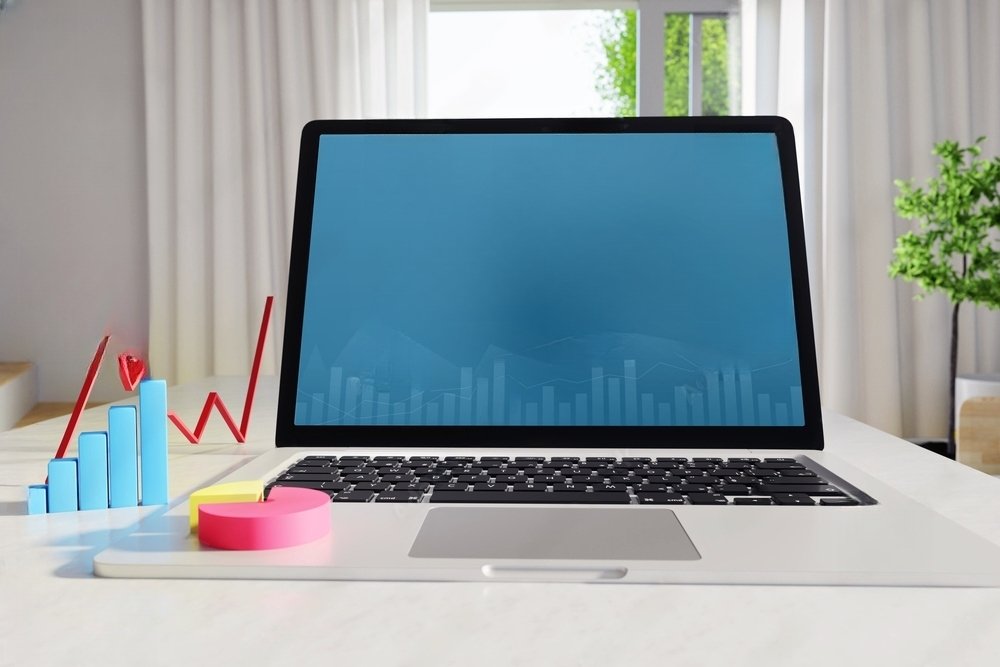Best Account Management in ERP - A complete guide
Accounting Modules in ERPNext
ERPNext is a powerful and flexible commercial enterprise control software that allows you to run your operations efficiently and correctly. ERPNext is an incorporated gadget that covers various aspects of your enterprise, which includes accounting, income, stock, manufacturing, human sources, and more.
One of the key features of ERPNext is its accounting module, which provides a complete solution for coping with your budget. whether or not you are a small enterprise owner, a freelancer, or a huge organization, ERPNext allows you to along with your accounting needs.
in this blog publish, we can discover the accounting module of ERPNext in Element and show you how it assists you to with account control. we can cover the following subjects:
- Accounting Modules in ERPNext
- Chart of accounts
- magazine Entries
- Bank and coins management
- Accounts payable and Receivable
- constant belongings management
- economic Reporting
- Automation and Integration
- Safety and Permissions
Let's get started out!
Accounting Modules in ERPNext

ERPNext gives more than a few accounting modules that cater to one-of-a-kind elements of your financial operations. these modules paint together to provide a whole accounting answer in your enterprise. here are some of the accounting modules that ERPNext offers:
- Preferred Ledger: This is the center module that facts all your financial transactions and generates reviews along with balance sheets, earnings statements, and trial balances. you could also create budgets, cost centers, and tasks to music your earnings and expenses.
- Debt Payable: This module helps you control your lenders, or the humans and groups that you owe money to. you can create buy invoices, document payments, and music brilliant balances. you can also generate reports together with dealer statements and get older evaluations.
- Bills Receivable: This module allows you to control your borrowers, or the people and businesses that owe you money. you can create income invoices, file receipts, and track wonderful balances. you may also generate reviews which include client statements and growing old analysis.
- constant assets: This module enables you to manage and track your constant property, or the long-term assets that you use for your enterprise. you could create asset statistics, calculate depreciation, and file asset moves and disposals. you may additionally generate reports together with asset check-in and depreciation timetables.
- Taxes: This module facilitates you to manipulate your taxes, along with GST, VAT, or income tax. you may create tax debts, tax policies, and tax templates to apply taxes for your transactions. You could also generate tax reviews together with GST returns and tax summaries.
These are some of the principal accounting modules that ERPNext gives. There are also other modules that support your accounting functions, which include payroll, fee claims, loans, subscriptions, and more.
Chart of debts

A chart of money owed is a listing of all the money owed that you use for your accounting gadget. It defines the structure and hierarchy of your accounts and facilitates you to prepare your economic statistics.
ERPNext lets you create and manipulate your chart of bills without difficulty. you may use the default chart of accounts furnished by ERPNext or customize it to fit your business needs. you could also import or export your chart of debts from or to different structures.
ERPNext gives you the ability to set up your debts according to your agency's structure and reporting needs. you may create money owed for exceptional entities, inclusive of branches, departments, divisions, or initiatives. you could additionally create bills for one-of-a-kind classes, consisting of property, liabilities, equity, profits, charges, or taxes.
You may view your chart of accounts in a tree view or a listing view. you can also drill down into every account to see its info and transactions.
journal Entries

A journal entry is a report of a monetary transaction that influences one or more money owed in your accounting device. Magazine entries are used to record transactions that are not captured by other files, inclusive of invoices or bills.
ERPNext lets you create and manage magazine entries easily. you can create journal entries manually or automatically primarily based on certain triggers or situations. you can additionally import or export journal entries from or to different structures.
ERPNext enables you to preserve accurate financial data by way of making sure that every journal access follows the double-access accounting principle. this means that each journal entry ought to have as a minimum bill: one debit account and one credit account. the entire amount of debits needs to be identical to the whole quantity of credits.
You could view your magazine entries in a list view or a record view. you could also drill down into every journal entry to peer its details and transactions.
Bank and cash control

Financial institution and cash management is the manner of monitoring and handling your bank accounts and coin transactions. It entails recording deposits, withdrawals, transfers, reconciliations, and other sports associated with your bank debts and cash flows.
ERPNext helps you with bank and coin control by means of presenting diverse capabilities and gear. a number of those functions are:
- Bank money owed: You may create financial institution accounts for distinct banks and currencies that you use on your commercial enterprise. you could also hyperlink your bank debts to your accounting ledgers and transactions.
- Financial institution Transactions: You may document bank transactions, including deposits, withdrawals, transfers, expenses, and interest. you may additionally import bank transactions out of your financial institution statements or different assets.
- Bank Reconciliation: You can reconcile your financial institution transactions together with your accounting facts to ensure that they are in shape and accurate. you may additionally use the bank reconciliation device to identify and solve any discrepancies or errors.
- Coins Transactions: You could document cash transactions, which include coins receipts, cash bills, cash transfers, and petty cash costs. you could additionally hyperlink your cash transactions for your accounting ledgers and transactions.
- Coins drift control: You can display and control your cash flows via the use of numerous reviews and dashboards. you may additionally use the cash drift forecast tool to predict your destiny coins inflows and outflows.
Accounts payable and Receivable

Bills payable and receivable are the quantities that you owe or are owed by your customers and suppliers. they're additionally called lenders and borrowers, respectively.
ERPNext streamlines the control of money owed payable and receivable by means of presenting numerous functions and gear. some of these capabilities are:
- Invoicing: You can create invoices for your customers and suppliers to report the goods or offerings that you have offered or bought. you may additionally personalize your invoices to include details along with phrases, discounts, taxes, and more.
- Fee tracking: You can song the bills that you have made or acquired for your invoices. you can additionally record partial bills, enhance payments, overpayments, and refunds.
- Growing old reviews: You could generate getting older reports to analyze the past due quantities that you owe or are owed by way of your clients and suppliers. you may also use the getting old reports to follow up on exceptional invoices and bills.
- Charge Reminders: You could ship price reminders to your clients and suppliers to inform them of their due or late invoices and payments. you can also automate the charge reminders primarily based on positive standards or schedules.
fixed belongings control

constant property management is the method of managing and monitoring your fixed assets, or the long-term belongings that you use in your enterprise. It includes recording asset purchases, disposals, movements, preservation, and depreciation.
ERPNext facilitates you with fixed property management by imparting diverse capabilities and tools. some of those functions are:
- Asset statistics: You may create asset facts for each of your fixed belongings to shop records which include asset name, asset code, asset category, asset value, asset location, asset status, and more.
- Depreciation Calculations: You may calculate depreciation in your fixed property with the use of diverse strategies, consisting of instantly-line, reducing stability, or guide. you could also install depreciation schedules and put up depreciation entries automatically.
- Asset history: You may tune the history of your fixed belongings by recording asset moves, disposals, upkeep, maintenance, and upgrades. you can additionally attach files and notes to your asset records.
- Asset reviews: You could generate asset reviews to investigate the overall performance and fee of your constant belongings. you could additionally use the asset reports to comply with accounting standards and tax regulations.
financial reporting

monetary reporting is the system of making ready and providing financial statements and reviews that show the monetary function and performance of your enterprise. It entails summarizing and reading financial information from various resources.
ERPNext provides you with economic reporting by offering various features and gear. a number of those functions are:
- Financial Statements: You can generate financial statements which include stability sheets, profits statements, coins glide statements, and fairness statements. you may also customize your monetary statements to consist of info together with filters, columns, ratios, charts, and extras.
- Monetary reports: You could generate economic reports inclusive of trial balances, widespread ledgers, income and loss statements, finance variance reviews, fee middle reviews, undertaking reviews, tax reviews, and more. you can additionally personalize your monetary reports to include info that includes filters, columns,etc
- Budgets and Forecasts: You can create budgets and forecasts for your income and expenses, and track your performance against them. You can also set alerts and notifications for budget variances, and adjust your budgets and forecasts as needed.
- Bank Reconciliation: You can reconcile your bank transactions with your accounting entries, and ensure that your books are accurate and up to date. You can also import bank statements, match transactions, create payment entries, and resolve discrepancies.
- Cost Accounting: You can allocate costs to different dimensions of your business, such as projects, departments, branches, locations, or any other criteria. You can also track the profitability and efficiency of each cost center, and analyze the impact of your cost drivers on your bottom line.
Sharvari Rathod
ERP enthusiast. Likes to write blogs that help people adopt technology for their benefit.
No comments yet. Login to start a new discussion Start a new discussion